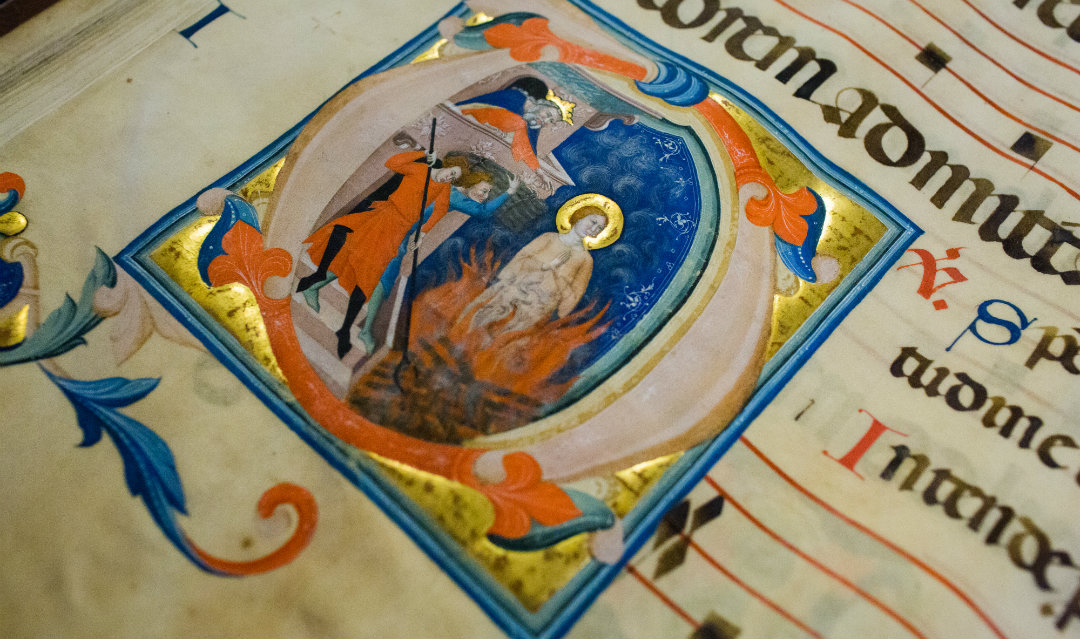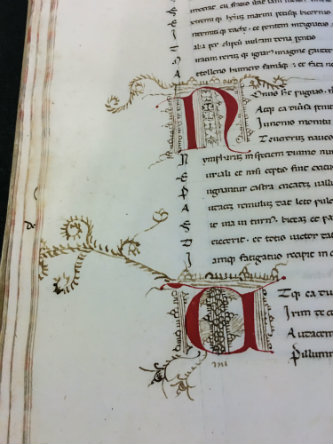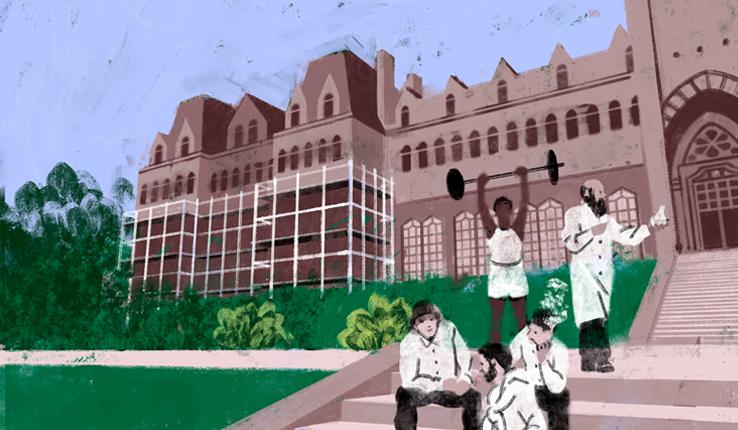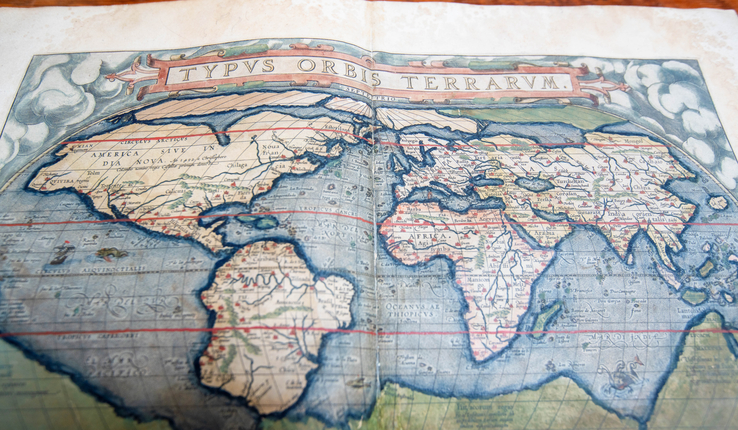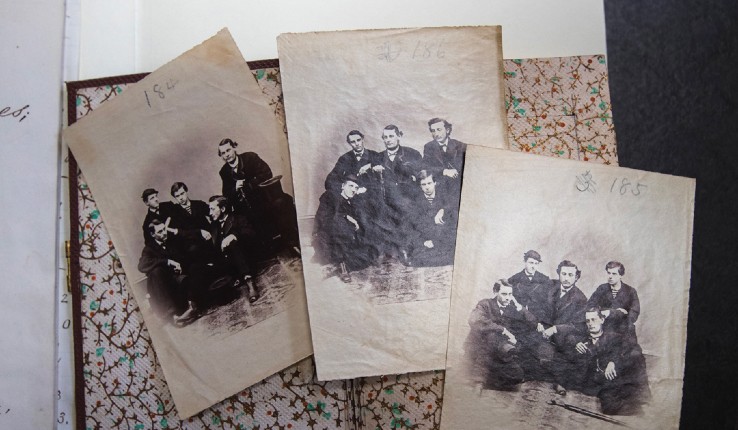Lehigh’s Special Collections
Lehigh contributed 27 manuscripts amounting to about 5,000 pages to the online collection. Among Lehigh’s holdings are a 1462 handwritten copy of Virgil’s Aeneid with penciled sketches in the margins, and several richly illuminated Books of Hours, Christian prayer books popular in the Middle Ages. One, known as Lehigh Codex 18, contains 13 vibrantly handpainted miniatures likely produced in France in the early 16th century, that previously were unpublished.
Some of Lehigh’s holdings have been requested numerous times by researchers around the world, including one that is in Catalan and another that is Dutch in origin, Black said. “We weren’t in a position to digitize these manuscripts before,” due to staffing and need for sophisticated equipment, Black said. “It is with the funding for this entire project that has enabled us to make them widely available and satisfy the needs of researchers around the globe.”
Lehigh, which contracted with an outside firm to digitize the works, both scanned its own collection and served as the project’s fiscal agent. Lehigh also created a non-publicly accessible “dark archive” of the project’s images and metadata, providing a critical backup.
Lehigh is lending material to two exhibits taking place in Philadelphia in coming months, one an exhibit at University of Pennsylvania on “Making the Renaissance” in February-May 2020 and the other on “Reflections of Medieval Life” at Philadelphia Free Library in March-June 2020.
A Collaborative Effort
In addition to Lehigh and co-principal investigators at Free Library of Philadelphia (lead contributor) and University of Pennsylvania Libraries (OPenn host and lead imaging/metadata center), project participants include these libraries and museums: Bryn Mawr College, Science History Institute, College of Physicians of Philadelphia, Franklin and Marshall College, Haverford College, Library Company of Philadelphia, Philadelphia Museum of Art, Rosenbach Museum and Library, Swarthmore College, Temple University, University of Delaware and Villanova University.
Scholars from the Schoenberg Institute of Manuscript Studies at Penn Libraries cataloged the manuscripts, a majority of which are housed at the Free Library of Philadelphia.
“I am very excited about Lehigh Libraries' leadership and multi-year contributions to this visionary PACSCL endeavor," said Lehigh University Librarian Boaz Nadav-Manes. "The highly intuitive interface provided by BiblioPhilly brings back to life the unique materiality and historicity of each one of these original manuscripts." The project vividly exposes the work of medieval authors, illustrators and craftsmen, and the emotional connection between artifacts and their various readers through different ages and cultures, he said.
"The PACSCL collaboration truly captures the imagination as it proposes a new way by which library experts working collaboratively can integrate the power of visualization and technology to make readily accessible manuscripts that many in and outside of Lehigh's community would never get access to otherwise," Nadav-Manes said.
Throughout the project and since its completion, scholars and fans have followed along via PACSCL’s website and social media channels, including its Tumblr blog and Twitter (@pacscl and #bibliophilly), where posts highlight features of the collection. A PACSCL blog on “52 Discoveries from the BiblioPhilly Project” shares updates on ongoing findings brought to light via the online library, ushering medieval revelations into the digital age.
Collection access points:
For more information about the project, contact Lehigh Libraries’ Special Collections at inspc@lehigh.edu.


